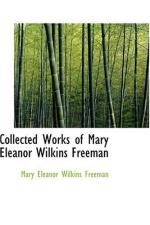|
This section contains 6,939 words (approx. 24 pages at 300 words per page) |

|
SOURCE: “Pieces: Artist and Audience in Three Mary Wilkins Freeman Stories,” in Colby Quarterly, Vol. 29, No. 1, March, 1993, pp. 43–56.
In the essay below, Johnsen explores Freeman's use of cloth and clothing as principal images representing the artist's relationship to society in “An Honest Soul,” “On the Walpole Road,” and “Sister Liddy.”
Even at the end of the nineteenth century, most apparel was homesewn, and all girls were taught needle skills. Consequently, writing women often clothed their literary visions in the woven materials that covered furniture, adorned beds, and dressed bodies, rather than borrowing the whales, forests, and ledgers that inspired men. As young Mary Wilkins watched dressmakers and reluctantly stitched her own patchwork, she imbibed knowledge. When she began writing, those childhood images of women sewing naturally found their way into her work. After all, etymologies of word pairs like “textile”/“text” and “fabric”/“fabrication” suggest that constructing with...
|
This section contains 6,939 words (approx. 24 pages at 300 words per page) |

|


